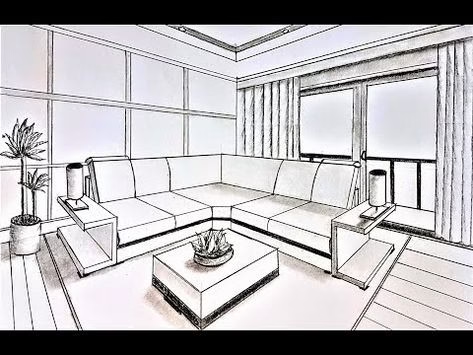In the world of construction, civil engineering has long been seen as the foundation—focused on stability, safety, and functionality. But as the industry evolves, the demand is shifting toward professionals who can also design visually compelling, user-friendly, and livable spaces. For polytechnic students with a diploma in civil engineering, enrolling in an interior design institute can be a game-changing decision that accelerates their career growth and sets them apart in the job market.
Whether your goal is to become a site supervisor, project manager, design consultant, or start your own firm, adding interior design training to your profile equips you with the well-rounded knowledge that employers and clients are actively seeking.
Why Should Civil Diploma Students Learn Interior Design?
Civil diploma holders already have a strong understanding of the structural side of construction—materials, foundation work, site management, and execution. But buildings are not just bricks and beams; they’re environments where people live, work, and connect.
Interior design brings the human-centric perspective to construction. It focuses on how people interact with spaces, how aesthetics influence mood, and how layout affects functionality. When civil students learn this, they begin to see the complete picture—not just how to build a space, but how to design it for real-life use.
Top Ways Interior Design Institutes Boost Careers for Civil Engineering Students
1. Dual Skill Advantage
When you combine civil engineering with interior design, you become a multi-skilled professional. You can take on roles in both structural execution and interior planning—making you more employable in real estate, construction, architecture, and interior firms.
For example, instead of just building a commercial space, you can also help plan the lighting, layout, furniture, and finishings. This makes you more valuable to employers and clients alike.
2. Stronger Job Prospects
Employers today look for professionals who can handle multiple aspects of a project. With interior design skills, you become eligible for roles such as:
- Site Coordinator with Design Expertise
- Interior Project Executive
- Space Planner
- Fit-out Manager
- Turnkey Project Consultant
These roles are often higher paying and offer faster career growth than traditional civil diploma jobs.
3. Ready for Entrepreneurship
Many civil diploma holders dream of starting their own construction business or contracting firm. With interior design knowledge, you can go one step further and offer end-to-end services—from structure to finish.
This makes you highly attractive to homeowners, offices, and retail clients who prefer a single point of contact for their entire space transformation. You can confidently handle planning, budgeting, execution, and aesthetics, building a strong reputation in the market.
4. Better Client Communication
Interior design training improves your ability to visualize spaces, create mood boards, present concepts, and understand client needs. Civil engineering focuses on specifications and strength, but interior design focuses on the experience of the end user.
With both perspectives, you can explain your ideas to clients more clearly and build trust—skills that are essential if you plan to freelance, consult, or run your own practice.
What Do Interior Design Institutes Teach That Civil Students Benefit From?
Reputable interior design institutes teach a blend of technical, artistic, and practical skills that enhance a civil engineer’s capabilities:
- Space Planning & Layouts: Learn how to design efficient, ergonomic, and beautiful interiors.
- 3D Visualization Tools: Master software like AutoCAD, SketchUp, and 3Ds Max to create professional-level designs.
- Material Knowledge: Understand how to select finishes, flooring, fabrics, and furnishings based on use, durability, and design goals.
- Lighting & Color Theory: Discover how to enhance mood, functionality, and style through lighting and color choices.
- Project Management: Gain insights into budget planning, vendor coordination, and timeline control.
- Site Supervision for Interiors: Learn how to oversee interior work, from electrical to false ceilings, painting to furnishing.
This comprehensive training fills the gaps that civil engineering programs don’t typically cover, making you a complete project professional.
Real-World Scenarios Where Civil + Interior Design Helps
Imagine you’re working on a residential villa. As a civil diploma holder with interior training, you can:
- Plan structural work like walls and beams
- Suggest an open kitchen layout for better flow
- Choose suitable lighting for each room
- Coordinate tile patterns and wall finishes
- Ensure electrical points match the furniture plan
Instead of depending on multiple professionals, clients can rely on you—a versatile expert who understands structure and style.
Who Can Benefit the Most?
- Final-year diploma students looking to gain a creative edge before entering the workforce
- Fresh graduates wanting to specialize in interiors and build a high-paying career
- Working civil professionals aiming to switch to design, renovation, or project management roles
- Entrepreneurs wanting to start their own design-build or interiors business
Regardless of your current level, adding interior design to your civil background will supercharge your potential.
Conclusion
For polytechnic civil engineering students, enrolling in an interior design institute in Bangalore is more than just adding a new skill—it’s a career booster. It unlocks a world of opportunities in both the creative and technical sides of the construction industry.
You gain versatility, better job prospects, stronger client appeal, and even entrepreneurial freedom. As the industry continues to evolve, those who can design and build will always stay ahead. If you’re a civil diploma holder looking to stand out, now is the time to invest in interior design training—and become the professional that today’s industry truly values.







